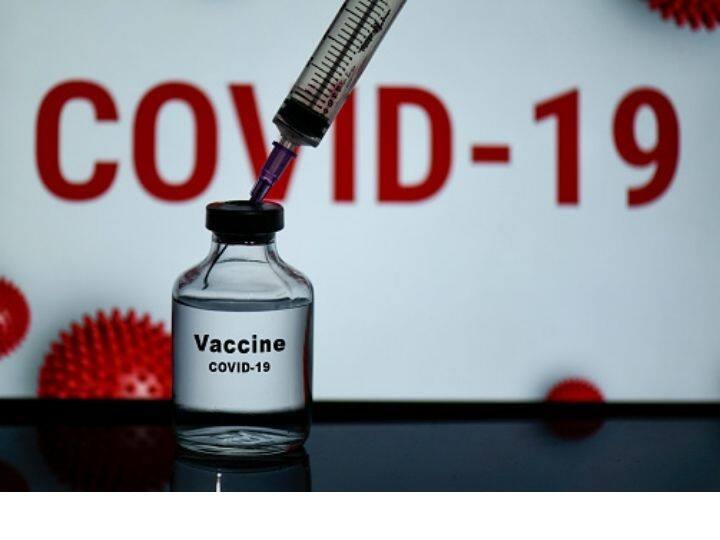6 Different Covid Boosters Are Safe, Increase Immunity In Fully Vaccinated People: Study In Lancet
The first randomised trial of boosters given after two doses of Oxford–AstraZeneca or Pfizer-BioNTech Covid-19 vaccines was conducted as part of the COV-BOOST study, and seven vaccines were involved.

New Delhi: A booster dose of six different Covid-19 vaccines is safe and creates strong immune responses in people who have previously received a two-dose vaccination course, according to a new study published in The Lancet.
The first randomised trial of boosters given after two doses of Oxford–AstraZeneca or Pfizer-BioNTech Covid-19 vaccines was conducted as part of this study.
The AstraZeneca vaccine, which has the code name ChAd, has been deployed in more than 180 countries. The Pfizer-BioNTech vaccine, with the research name BNT, has been administered in over 145 countries. Two doses of ChAd confers 79 per cent protection against hospitalisation and death after six months, according to different studies. A two-dose course of the BNT vaccine provides 90 per cent protection against the same Covid-19 outcomes after six months.
Since the protection offered by the Covid-19 vaccines wanes over time, boosters are being considered to protect the most vulnerable groups, reduce pressure on health services, and mitigate economic impacts.
However, there is not much information on the comparative study of vaccines, and the immune responses stimulated by them when administered as a third dose.
COV-BOOST Study Involved 7 Vaccines
The new research, called a COV-BOOST study, looked at the safety, immune response (immunogenicity) and side-effects (reactogenecity) of seven vaccines used as a third booster shot. ChAd, BNT, NVX-CoV2373 (Novavax [NVX]), Ad25.COV2.S (Janssen [Ad26]), Moderna [mRNA 1273], VLA2001 (Valneva [VLA]), and CVnCov (Curevac [CVn]) are the seven vaccines that were studied.
Professor Saul Fraust, the trial lead, said all the seven vaccines were safe to use as third doses, as shown by the side effect data, according to a Lancet statement. There were acceptable levels of inflammatory side effects like injection site pain, muscle soreness, fatigue he added.
It was observed that all vaccines used as a third booster jab increase spike protein immunogenicity after two doses of AstraZeneca, he said. However, after two doses of Pfizer-BioNTech, only the booster shots of AstraZeneca, Pfizer-BioNTech, Moderna, Novavax, Janssen and Curevac increased spike protein immunogenicity, he added.
Wide Range Of Vaccines Show Benefits As A Third Dose
Fraust said it is really encouraging that a wide range of vaccines show benefits as a third dose to either AstraZeneca or Pfizer-BioNTech, using different technologies, and that gives confidence and flexibility in developing booster programmes on the UK and across tbe globe.
The results relate only to the seven vaccines as boosters to the two primary vaccines, he noted. The results also relate to the immune response driven by the vaccines at 28 days, he added. Future studies will generate data at three months and one year after people have received their boosters, and this will provide insights into the impact of the boosters on long-term protection and immunological memory, he said.
The researchers were also studying two of the vaccines in people who had a later third dose after seven to eight months, he added.
The COV-BOOST study was a randomised, Phase II trial of the seven booster vaccines. Ten to twelve weeks after the initial two-dose courses of ChAd or BNT, the third doses were administered, the study said.
As many as 2,878 participants in good health were involved in the trial, between June 1, 2021, and June 30, 2021. They were recruited at 18 UK sites, and had recieved their first doses of ChAd or BNT in December 2020, January or February 2021, and their second doses at least 70 days before enrolment for ChAd, and at least 84 days before enrolment for BNT.
The number of participants who received two doses of ChAd was almost equal to the the number of participants who received both doses of BNT, the study said.
A meningococcal conjugate vaccine (MenACWY) was used as the control vaccine. A meningococcal conjugate vaccine is one which is used to prevent infection caused by serogroups A, C, W, and Y, and helps one's body develop immunity to meningitis (a type of inflammation), but will not treat an active infection the person already has.
The participants were aged 30 years or older. Around half of them were aged 70 years or older. In the younger age group, the average age of participants who received ChAd was 53 years, while in the older age group, the average age was 76 years, the study said. In the average ages in the younger age and older age groups for BNT were 51 and 78 years, respectively.
The total number of experimental and control trials in the study was 13. This included randomised, Phase II control trials of the seven vaccines, three trials for those who had received just one dose, and three control arms. There were three participant groups, with six sites per group.
Group A received NVX, half dose NVX, ChAd, or a control. Group B received BNT, half dose VLA, Ad26, or a control. Group C received Moderna, CVn, half dose BNT, or a control, the study said. CVn was withdrawn from further clinical development in October this year.
Primary And Secondary Outcomes Of Receiving A Booster
Adverse effects were observed seven days after receiving a booster. Also, the levels of antibodies targeting the spike protein on the surface of Covid-19 virus cells had increased after 28 days, compared to controls. These were some of the primary outcomes.
The response of T cells was one of the secondary outcomes. T cells play an important role in the immune response to viral infection, and help control disease severity to the wild type strain, and the Alpha, Beta, and Delta variants. Vaccine effectiveness is determined by two important factors — antibody-mediated immunity, and T-cell response.
Increases in anti-spike protein antibody levels were different for different vaccines, the study said. Depending on the booster vaccine used after two doses of ChAd, the increases in anti-spike protein antibody levels ranged from 1.8 times higher to 32.3 times higher. The range, after two doses of BNT, was 1.3 times higher to 11.5 times higher, the study said. Also, several combinations resulted in significant T-cell responses.
Most Commonly Reported Reactions To All Seven Vaccines
The most commonly reported reactions to all seven vaccines were fatigue, headache, and pain at injection spot. These symptoms were mostly prevalent in the participants aged 30 to 69. A total of 1036 adverse events were experienced by as many as 912 participants. These adverse events were effects beyond the side effects, and 24 of these adverse events were severe, the study said.
One of the limitations of the study was that the interval between the second and third doses was shorter in some participants than between their first two doses, due to pandemic timelines and the need to generate data to inform policy in September 2021, the authors noted.
Also, immunogenicity, and antibody responses may be improved when there is a longer time period between the first and second doses, according to several studies. When the gap between the initial BNT does is 12 weeks rather than 3 weeks, improved immunogenicity was observed. This means that the boost in immunity observed in the COV-BOOST study could be lower than what would have been observed had longer dose intervals been used, the authors noted.
The generalisability of the findings has been limited to younger age groups, because only participants aged 30 and above were included. This is because vaccines tend to create a stronger immune response in younger people, and slightly higher rates of adverse effects, according to studies.
Not all vaccines were randomised together due to the trial design. This meant not all vaccines could be tested at half dose, the study said. Future studies will be focused on comparing vaccines in different groups, the authors concluded.
Check out below Health Tools-
Calculate Your Body Mass Index ( BMI )
Calculate The Age Through Age Calculator
Related Video
Breaking: ED Busts UP Cough Syrup Smuggling Network, ₹400 Crore Fake Firms Scam Uncovered






































